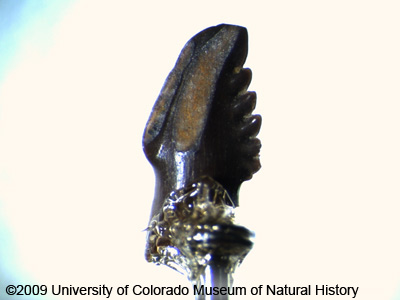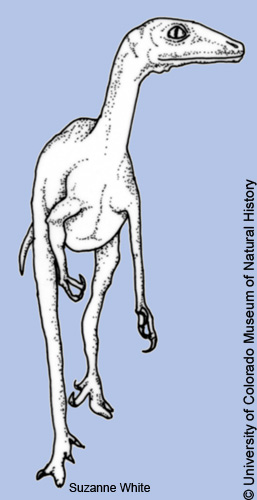

The Troodon (Troodon formosus), a fast, two-legged dinosaur of the Cretaceous that weighed about 132 pounds (60 kilograms) and measured about 6 feet (1.8 meters) long, had an unusually large brain relative to its body.
Named for its sharp teeth (troodon is Greek for "wounding tooth"), scientists originally thought Troodon was a predator. However, evidence indicates that Troodon may have been an omnivore or even an herbivore, possibly subsisting on small animals and plants. Although no specimens with feathers have been found, Troodon descended from feathered species of dinosaur and probably did have feathers.

The 70-65 million year old Lance Formation of Wyoming has produced many important fossils, ranging from tiny microfossils like those collected by harvester ants to fully articulated dinosaur skeletons. It was deposited by streams on a coastal plain stretching along the shallow interior sea of the Western Interior Seaway, which cut North America in half. Dinosaurs, reptiles, fish, amphibians, birds, and small mammals lived in a wet subtropical climate very different from today's dry seasonal climate.
Learn more about Troodon formosus at Dinosaur World.
Learn more about the Lance Formation with Passport-In-Time Microvertebrate Fossil Project at the University of Wyoming Geological Museum: Late Cretaceous Paleontological Resources in the Public Eye.